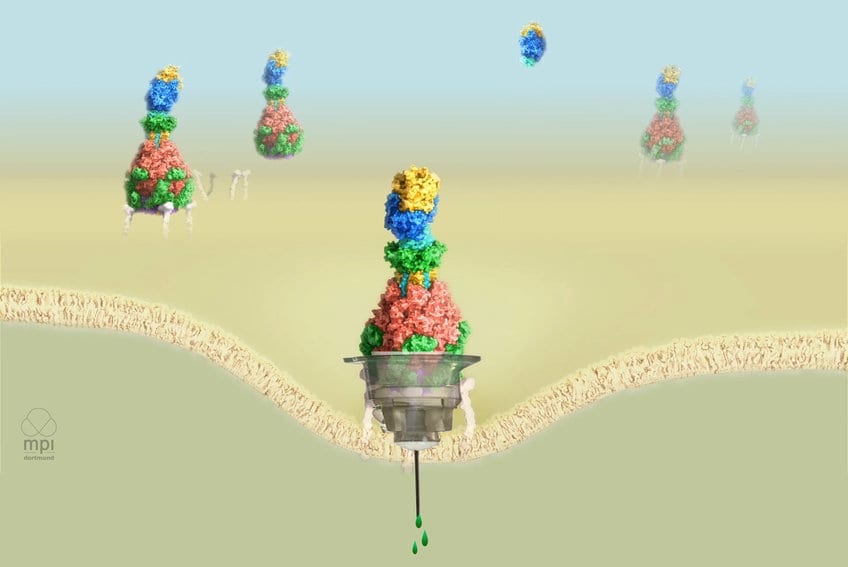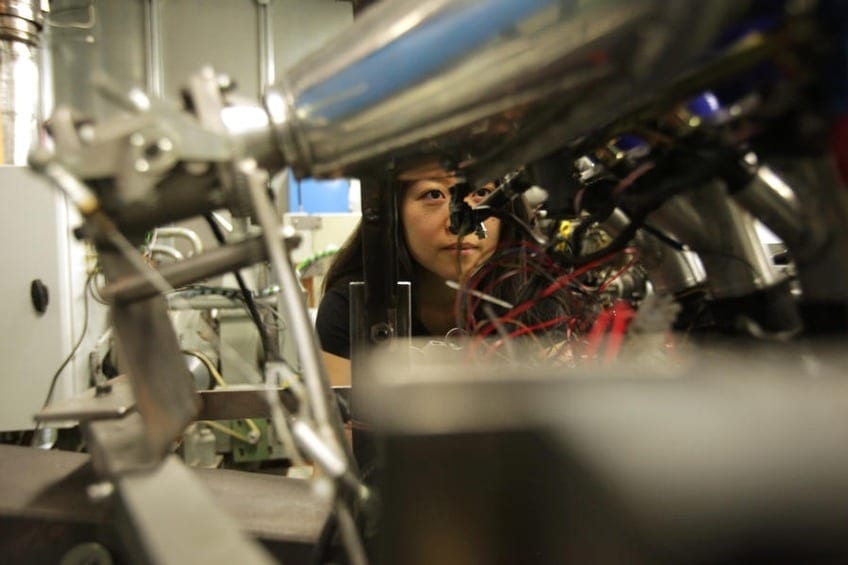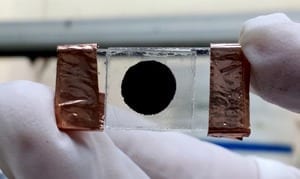
A modified anticancer drug can simultaneously target tumor sites and show whether or not it is working
Cancer drugs can be modified to specifically target tumor sites to help personalize cancer treatment. And while it is relatively easy to determine if the drugs have been delivered to the correct location, it is more difficult to monitor their therapeutic success. Now, a team led by Bin Liu from the A*A*STAR Institute of Materials Research and Engineering in Singapore, in collaboration with Ben Zhong Tang at Hong Kong University of Science and Technology, has developed an anticancer drug with an inbuilt mechanism that shows if it is working1.
Platinum-based drugs are effective against many cancers, killing cells by triggering cellular suicide, or apoptosis. These drugs can, however, have severe side effects. Nontoxic forms can be modified, as a type of prodrug, to convert to their toxic form only after entering the targeted tumor cells, so as not to harm noncancerous cells.
Liu and colleagues went one step further by modifying a platinum-based prodrug to not only target tumor cells effectively, but also show whether or not it was having the desired effect. According to Liu, this added feature could be crucial for improving cancer treatment.
“Early evaluation of a patient’s response to a specific cancer therapy is important in clinical applications because it can minimize the duration of ineffective courses,” explains Liu. “The effectiveness of cancer treatment is commonly evaluated using magnetic resonance imaging to measure the tumor size, but this is unsatisfactory as the change in size is not obvious at the early stages of therapy.”
In their new system, Liu and her team included an apoptosis sensor that is released when the prodrug converts to its toxic form inside the targeted tumor cells. The toxic form triggers cell apoptosis and activates an enzyme called caspase 3, which then cleaves the apoptosis sensor and causes it to fluoresce green. This provides a visual signal that the drug is killing the cells.
Read more . . .
The Latest on: Anticancer drug
[google_news title=”” keyword=”Anticancer drug” num_posts=”10″ blurb_length=”0″ show_thumb=”left”]
via Google News
The Latest on: Anticancer drug
- The Future of Antibody-Drug Conjugates in Lung Cancer Treatmenton May 9, 2024 at 6:52 am
Drs Jacob Sands and Benjamin P. Levy discuss antibody-drug conjugates in lung cancer treatment, including differences in efficacy, toxicity profiles, and what the future holds.
- Merck's Phase 3 Trial Of KEYTRUDA Plus Chemotherapy In Endometrial Cancer Fails To Meet Primary Goalon May 9, 2024 at 6:41 am
Drug major Merck & Co., Inc. (MRK) announced Thursday that the Phase 3 KEYNOTE-B21 trial evaluating its anti-PD-1 therapy KEYTRUDA ...
- A New Drug Is Helping Cervical Cancer Patients Live Longeron May 8, 2024 at 9:21 am
The FDA approved a new drug for the treatment of recurrent or metastatic cervical cancer. Experts say that this drug and others like it mark an exciting development in the treatment of cervical cancer ...
- How the drug abemaciclib treats breast canceron May 7, 2024 at 8:27 am
The anti-cancer drug abemaciclib (also known as Vernezio) has been added to the Australian Pharmaceutical Benefits Scheme (PBS) to treat certain types of breast cancer.
- Jill Martin Pokes Fun at Her Hair 'Growing Up' After Chemotherapy, Jokes That She Looks Like a Duckon May 6, 2024 at 10:30 am
Today' show correspondent Jill Martin, who lost her hair during chemotherapy for breast cancer, made fun of herself and the way her hair has been growing back after treatment.
- Beloved Coach, 60, Dies of Cancer After Chemo Drug Halted amid Nationwide Shortage: 'It Was Horrible'on May 6, 2024 at 6:08 am
Jeff Bolle, 60, died of cancer seven months after losing access to his chemotherapy drug amid the nationwide drug shortage.
- New Cancer 'Missile' Drugs May Be More Effective Than Traditional Chemotherapyon May 2, 2024 at 8:34 am
Antibody-drug conjugates are a new type of cancer therapy that deliver cancer-killing medicine to cancer cells, avoiding healthy cells along the way.
- Beloved high school football coach, 60, dies due to chemo drug shortageon May 1, 2024 at 11:25 am
Jeff Bolle’s death comes amid a devastating shortage of critical chemotherapy drugs, which has left cancer sufferers unable to access much-needed treatment ...
- Beloved football coach dies aged 60 after national chemotherapy drug shortage near end of treatmenton May 1, 2024 at 5:52 am
But doctors hoped that drug treatment and surgery could give Jeff a chance of living longer and so he started chemotherapy in October 2023. Jeff's wife Connie believes her husband's commitment to his ...
- Beloved high school football coach who couldn’t get chemotherapy drug due to national shortage dead at 60on April 30, 2024 at 11:09 pm
A beloved Wisconsin high school football coach died from his stage 4 cancer after the life-saving chemotherapy drug he needed for his treatment became unavailable due to a nationwide shortage. Jeff ...
via Bing News










